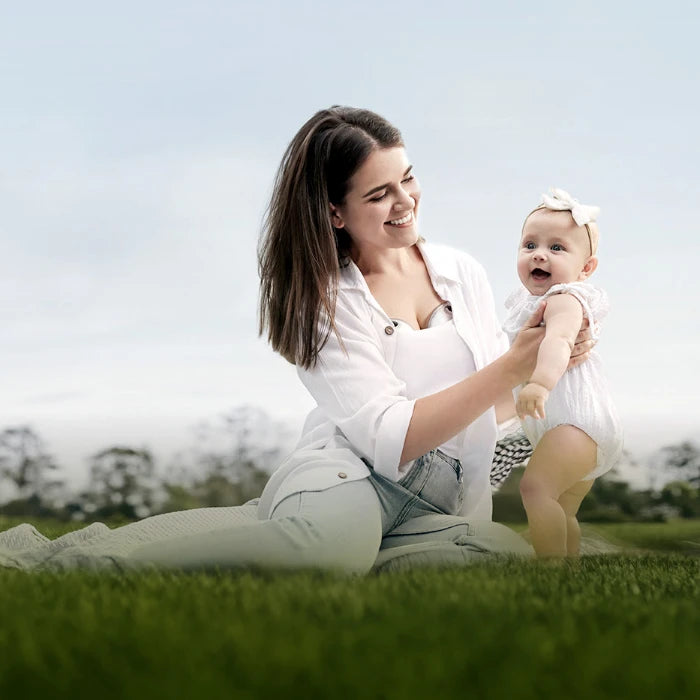Nipple Pain While Pumping: Causes and How to Get Relief
Pumping breast milk can be an incredibly rewarding experience for mothers, but it's not always pain-free. One of the most common concerns new moms face is nipple pain while pumping. Whether it's a sharp sting, a persistent ache, or even tenderness after each session, nipple pain can make breastfeeding and pumping feel overwhelming. But don't worry—you're not alone, and there are effective ways to manage the discomfort.
In this article, we’ll explore the common causes of nipple pain during pumping, how to identify signs of breast tissue damage, and share some helpful tips to soothe sore or cracked nipples. Let’s dive in!
Why Does Nipple Pain While Pumping Happen?
There are several reasons why you may experience nipple pain while pumping. Understanding these causes can help you pinpoint what might be causing the discomfort and how to address it:
1. Improper Flange Size
A common culprit behind nipple pain is using the wrong-sized pump flange. If the flange is too small or too large, it can create pressure that leads to sore or pinched nipples. The right flange should fit comfortably around your nipple, allowing the pump to mimic a natural feeding rhythm.
2. Incorrect Pumping Technique
Pumping too aggressively or at the wrong suction level can also lead to pain. If you’re using a high suction setting, it may cause unnecessary pressure on your nipples and areolas. It's essential to start with a low suction and gradually increase it as your body becomes accustomed to the pump.
3. Breast Tissue Damage from Pumping
Sometimes, signs of breast tissue damage from pumping may appear after a few pumping sessions. This can happen when the pump is not set properly or when excessive pressure is used. Signs of damage include bruising, redness, and even cracks in the skin around the nipple.

How to Get Rid of Sore Nipples from Pumping
Nipple pain doesn’t have to derail your pumping routine. There are a few effective strategies to manage sore nipples and prevent further irritation:
1. Apply Nipple Cream
One of the quickest ways to soothe sore or cracked nipples is by using a high-quality nipple cream. Lanolin-based creams are popular because they provide a protective layer and help promote healing.
2. Massage and Hydrate
Before you begin pumping, try gently massaging your breasts to stimulate milk flow. This can help reduce the pressure on your nipples. Hydrating your skin with oils or lotions before and after pumping can also alleviate dryness and prevent cracking.
3. Use Warm Compresses
Applying a warm compress to your breasts before or after pumping can help relax the tissue and reduce pain. This is particularly effective if you’re experiencing a stabbing pain in the breast after pumping or a sensation of fullness.
4. Take Breaks Between Sessions
It’s important to give your breasts a break between pumping sessions. Overuse can contribute to nipple vasospasm or even tissue damage. If you notice white nipples after pumping, this may be a sign of vasospasm, where the blood vessels constrict, cutting off circulation.
When to Seek Help: Serious Breast Pain Issues
If your pumping hurts all of a sudden or you experience prolonged discomfort that doesn’t improve with home remedies, you may need to consult a healthcare professional. Here are some red flags that suggest you might need medical attention:
Cracked or Bleeding Nipples: If the cracks don’t heal or become infected, you may need additional treatment, such as an antibiotic ointment.
Persistent or Severe Pain: If the pain doesn’t go away after adjusting your pump or using nipple creams, it could indicate a more serious issue, like an infection or an injury.
Severe Swelling or Redness: These can be signs of mastitis, an infection that requires prompt medical attention.

Tips for Preventing Nipple Pain While Pumping
Prevention is always better than cure. To keep nipple pain at bay, here are some tips:
Ensure Proper Pump Fit: Make sure your pump flange is the correct size. A flange that’s too small or too large can cause discomfort or damage. You can also check the fit by placing your nipple in the center of the flange and ensuring there’s no tugging or pinching.
Adjust the Suction Setting: Start with a lower suction level to see how your body reacts, then gradually increase it as needed.
Take Care of Your Skin: Moisturize your nipples and areolas regularly. Use a gentle, fragrance-free lotion or a nipple cream after every pumping session to keep the skin soft and hydrated.
Pumping Routine: If you notice that one side of your breast hurts after pumping, it may indicate an issue with your pumping technique, such as an uneven latch. Try switching positions or adjusting the pump’s angle.
Conclusion: Comfort and Solutions for Nipple Pain While Pumping
Dealing with nipple pain while pumping doesn’t have to be a constant struggle. By understanding the underlying causes and following the practical tips outlined here, you can manage and prevent discomfort effectively. Remember to always find the right balance between flange size, suction levels, and skin care.
If you continue to struggle with pain despite trying various solutions, consider adjusting your pump fit for better comfort. A breast pump flange insert can provide a more customized fit, reducing pressure and irritation. Additionally, investing in a high-quality breast pump designed for comfort and efficiency may significantly enhance your pumping experience, making each session more comfortable and less painful. With the right tools and care, you can maintain a smooth, pain-free pumping routine and keep providing nourishment to your baby without the discomfort.





Leave a comment
This site is protected by hCaptcha and the hCaptcha Privacy Policy and Terms of Service apply.